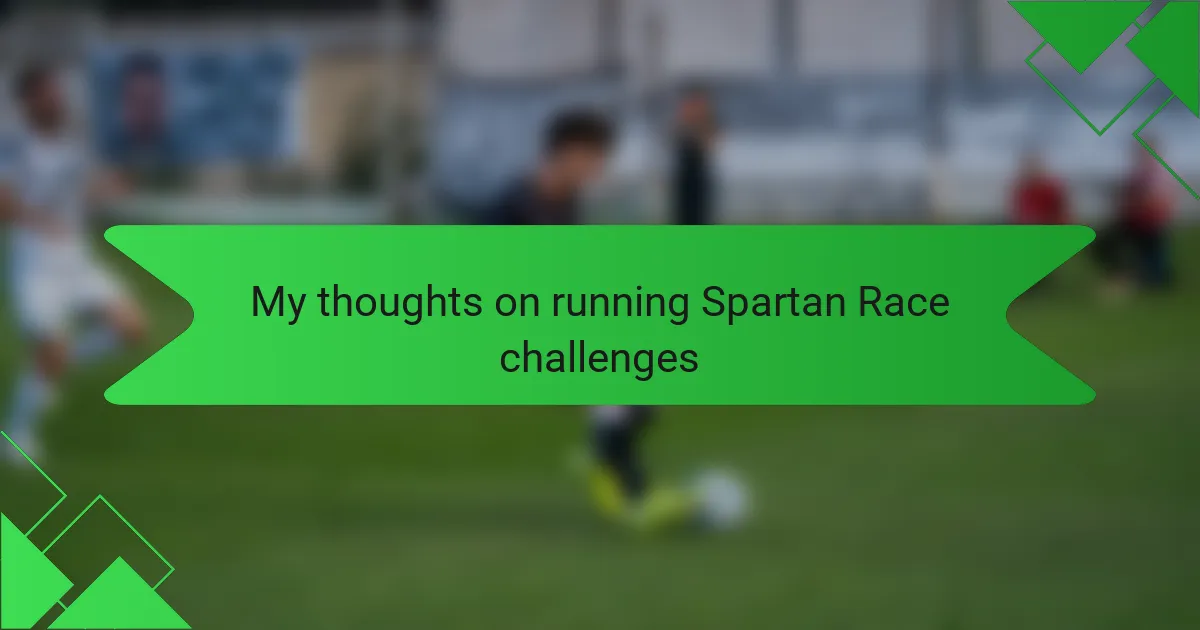Key takeaways
- Obstacle course racing (OCR) combines running with various physical challenges, focusing on strategy, endurance, and adaptability.
- Key skills for success include physical strength, mental toughness, and grip strength, which are essential for overcoming diverse obstacles.
- Consistent and varied training, including hill sprints and functional exercises, is crucial for preparing for Spartan Race challenges.
- Mental resilience and adaptability are vital, as racers must quickly adjust tactics and embrace challenges to push through fatigue and obstacles.
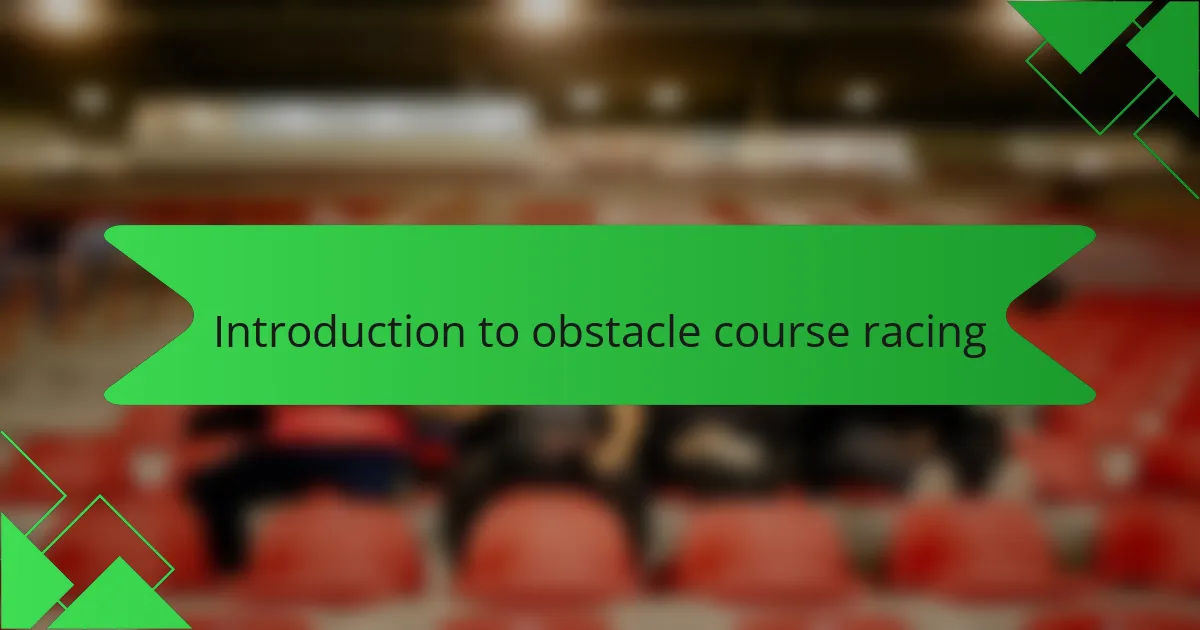
Introduction to obstacle course racing
Obstacle course racing (OCR) has quickly become one of my favorite ways to challenge both my body and mind. Unlike traditional running, OCR combines running with climbing, crawling, and tackling various obstacles, which keeps the experience exciting and unpredictable. From my experience, it’s not just about speed — it’s about strategy, endurance, and pushing past physical limits in ways I never imagined.
| Aspect | Traditional Running |
|---|---|
| Challenge Type | Endurance on flat or varied terrain |
| Physical Skills | Primarily cardiovascular and leg strength |
| Mental Focus | Maintaining pace and breathing |
| Variety | Generally consistent, repetitive movement |
| Obstacle Interaction | None |
| Emotion | Steady, rhythmical flow |
| Aspect | Obstacle Course Racing |
| Challenge Type | Combination of running and physical obstacles |
| Physical Skills | Strength, agility, endurance, problem-solving |
| Mental Focus | Adapting to new challenges and tactical thinking |
| Variety | Constantly changing obstacles and terrain |
| Obstacle Interaction | Integral part of the experience |
| Emotion | Excitement, adrenaline rush, and occasional frustration |

Understanding Spartan Race challenges
Understanding Spartan Race challenges is crucial for anyone ready to take on this intense obstacle course journey. From my experience, these races push not only your physical limits but your mental strength too, demanding grit and resilience. Each challenge offers a unique test, making the entire experience thrilling yet brutally rewarding.
| Challenge Type | Description & Personal Insight |
|---|---|
| Sprint | Shortest distance, high-intensity obstacles; felt like a quick but fierce battle that sped by. |
| Super | Moderate distance with varied obstacles; I found this balanced both stamina and technique well. |
| Beast | Longest and toughest, testing endurance and mind; I remember hitting a wall here but pushing through was exhilarating. |

Key skills for Spartan Race success
Key skills for Spartan Race success often come down to a mix of physical strength, mental toughness, and strategic pacing. From my experience, being able to quickly recover between obstacles makes a huge difference—you don’t want to burn out before the final sprint. Also, developing grip strength was a game-changer for me, especially on monkey bars and rope climbs that demand upper body endurance.
| Skill | Importance & Personal Insight |
|---|---|
| Physical Strength | Essential for overcoming obstacles like walls and carries; I found focusing on functional strength helped more than just pure muscle. |
| Mental Toughness | Crucial for pushing through fatigue and discomfort; I remember moments when mindset alone kept me moving forward. |
| Grip Strength | Often underestimated, but vital for rope climbs and monkey bars; improving my grip was key to avoiding failure on these challenges. |
| Endurance & Pacing | Helps manage energy throughout the race; learning when to sprint and when to conserve energy made the course feel more manageable. |
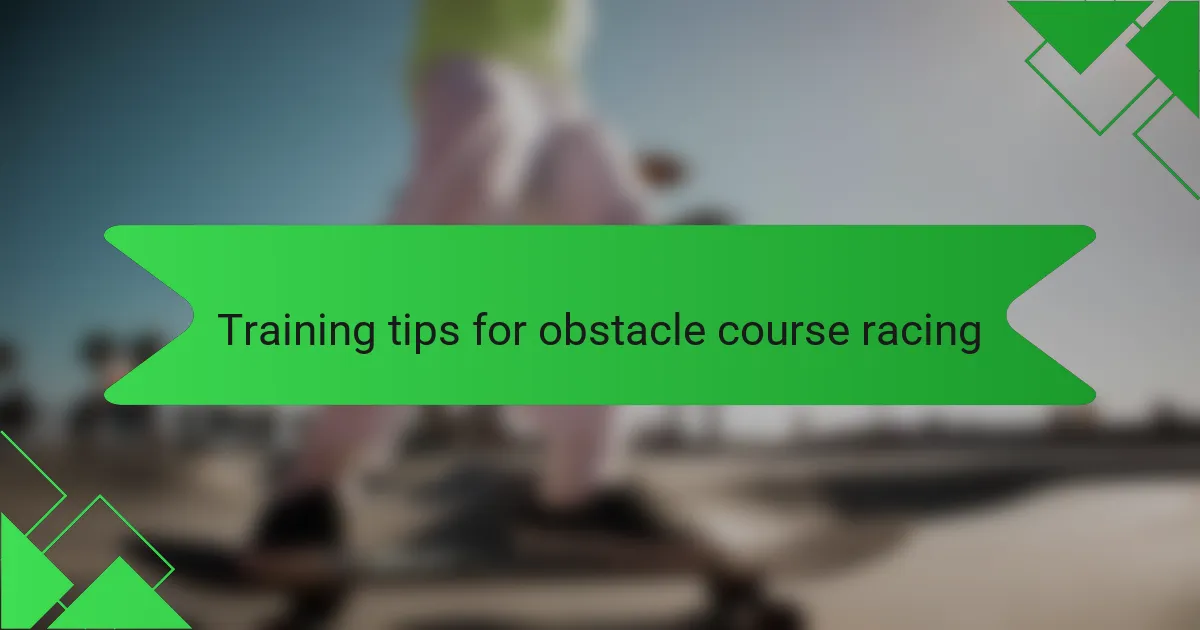
Training tips for obstacle course racing
When preparing for Spartan Race challenges, I found that balancing strength and endurance training made all the difference. Early on, I neglected grip strength, which quickly became a bottleneck on obstacles like the rope climb. Focusing on this area helped me push through moments when my hands just wanted to give up.
Consistency is key, but mixing up your routine keeps things exciting and prepares you for the unpredictable nature of the course. Here are some essential training tips I swear by:
- Incorporate hill sprints to build explosive power and stamina
- Practice obstacle-specific skills like monkey bars and wall climbs
- Train grip strength with farmer’s carries and dead hangs
- Include functional strength exercises like kettlebell swings and pull-ups
- Work on running endurance with interval training and trail runs
- Prioritize recovery with stretching and mobility work to avoid injury
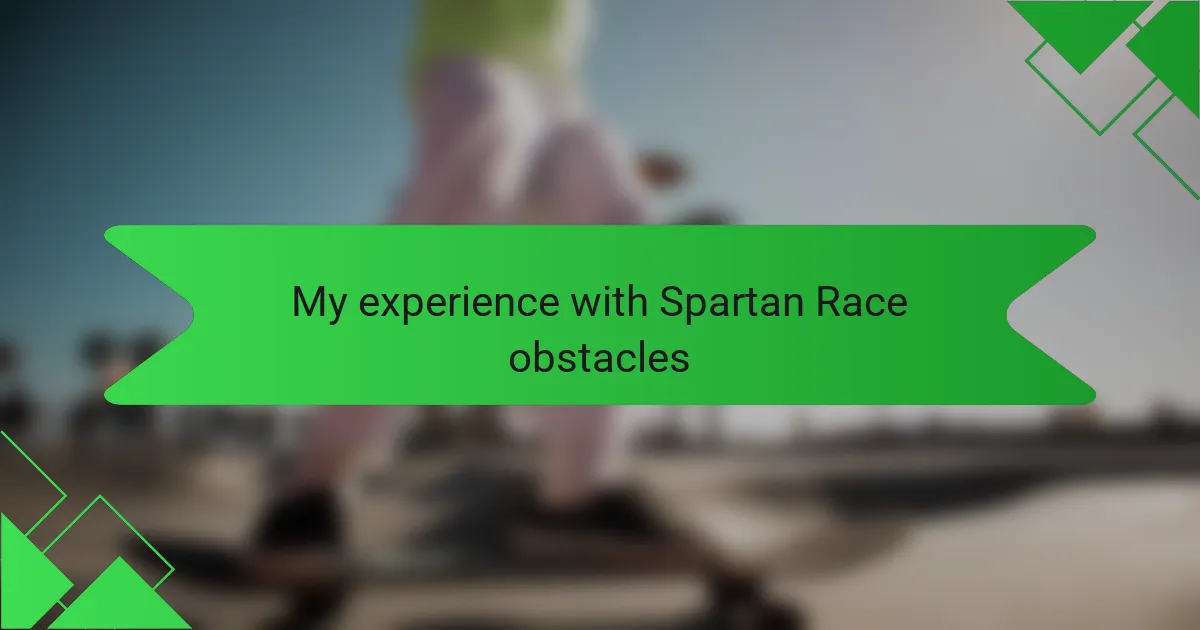
My experience with Spartan Race obstacles
Spartan Race obstacles have always been a mix of excitement and sheer challenge for me. I vividly recall the first time I faced the monkey bars—my grip was shaky, and halfway through, I seriously questioned if I could make it across without falling. But pushing through that moment gave me a real sense of accomplishment that traditional running never offered.
One thing I noticed is how each obstacle demands a different skill set. Some push your upper body strength, like rope climbs and wall traverses, while others test your agility and balance, such as the slippery cargo nets. I often found myself having to quickly adapt my approach on the spot, which kept me mentally sharp and fully present.
Have you ever felt that surge of adrenaline right before tackling a tough obstacle? That mix of fear and determination is unique to Spartan Races. Over time, I’ve come to appreciate how these obstacles not only challenge my physical limits but also teach me resilience and creative problem-solving under pressure.

Lessons learned from Spartan Race challenges
One lesson Spartan Races hammered into me is that hesitation often costs more than failure. I remember that moment on the rope climb when my grip started slipping—I hesitated, doubted, and nearly gave up. But those seconds lost made me realize that sometimes, pushing through uncertainty is what keeps you moving forward.
Another thing I learned is the power of mental resilience. During the Beast race, my body screamed for rest, and my mind raced with excuses. Yet, I found that telling myself, “Just one more obstacle,” helped break down the overwhelming challenge into achievable bits. It made me appreciate how much mindset shapes performance in these races.
Have you ever noticed how Spartan Races teach adaptability? No two obstacles are the same, and the terrain constantly changes. Learning to quickly switch tactics, whether that’s adjusting your grip or pacing differently, became a vital skill. This flexibility not only saved me energy but transformed frustration into a strategic advantage.
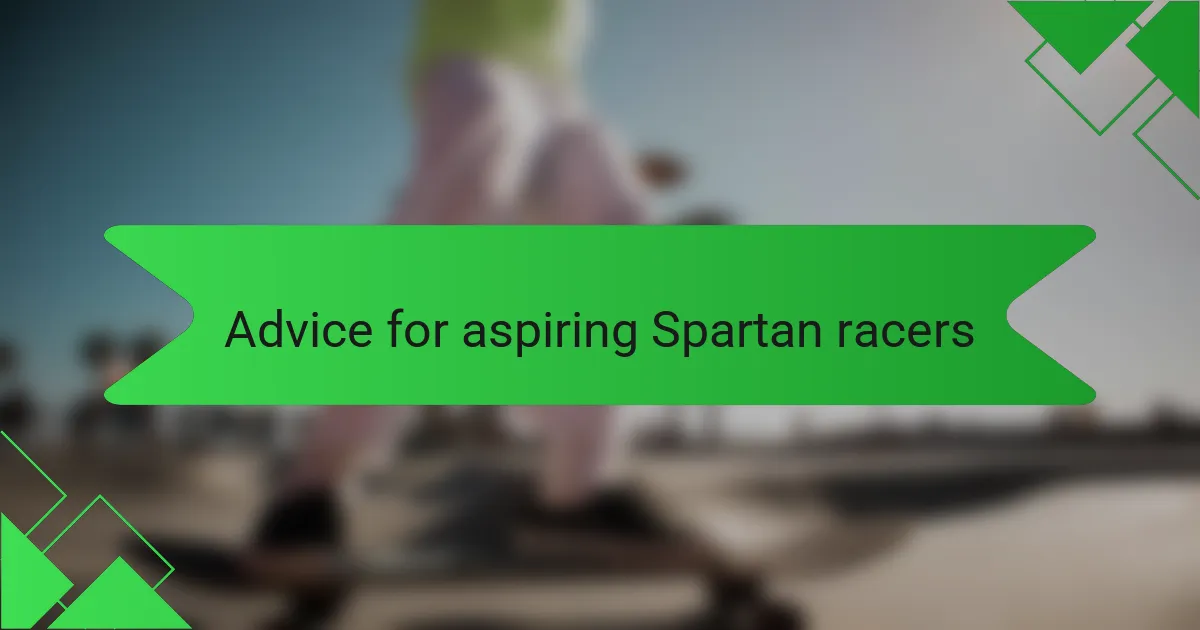
Advice for aspiring Spartan racers
I remember my first Spartan Race—nervous but excited. My advice? Focus on building functional strength and endurance, not just running speed. Training with obstacles in mind made a huge difference when I hit the course for real.
Consistency is key. I found that mixing trail runs, bodyweight exercises, and grip training gave me confidence. It’s not just about power; it’s about mental toughness too, so embrace every challenge as a chance to grow.
Here’s a quick comparison of training focuses that helped me prepare effectively:
| Training Focus | Why It Matters |
|---|---|
| Running Endurance | Helps you cover the distance without burning out early |
| Functional Strength | Prepares your body for climbing, lifting, and carrying obstacles |
| Grip Training | Crucial for monkey bars, rope climbs, and other hanging obstacles |
| Mental Toughness | Keeps you pushing through fatigue and tough moments |
